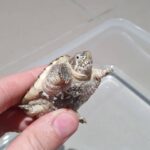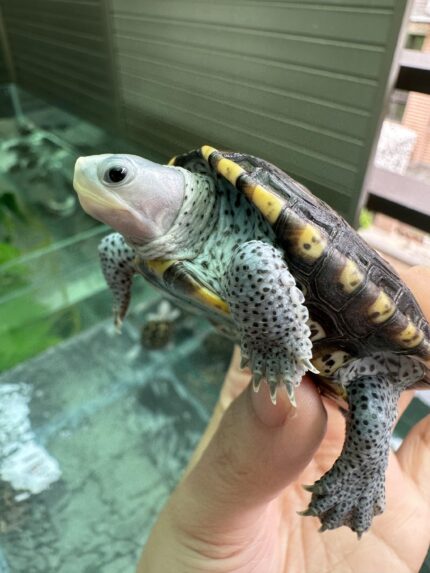Hypo Snapping Turtle
- Hypo Snapping Turtle Occurs from Southern Canada, Southwards Through the Eastern Two Thirds of The United States
- Adults Can Stretch Up To 18 Inches Long
- If properly cared for, these Reptiles Live 30 – 40+ years in captivity.
- Its Ridges on Its Back Will Be More Pronounced as Time Goes By giving them a prehistoric appearance.
- This species prefers shallow, slow-moving Waterways It is also an Ambush Predator
GENERAL
Hypo Snapping Turtle are aggressive. Their pugnacious attitude, however, makes them great feeders and therefore healthy, resilient captives. They get large! These feisty little beasts are hardy and those hobbyists keeping them are successfully breeding them.
DISTRIBUTION
There are four subspecies of Chelydra serpentina found from Canada southeast to Florida and south to Mexico and Central America.
SIZE
Adult size of a Hypo Snapping Turtle is about 18 inches.
ENVIRONMENT & ENCLOSURE
Common Snappers are great display animals in large enclosures outdoors. They do very well in outdoor ponds. They will, however, eat any creature, including other turtles. Therefore, they are not a good choice for an outdoor community pond. They are not particularly picky about water quality, pH, or decorations, but we suggest using driftwood and aquatic plants to provide them a naturalistic environment. Some creativity in the enclosure can provide them with exercise that is very important for captive Hypo Snapping Turtle.
Indoors, a basic setup using a large tub or stock tank will be sufficient to hold a medium to large adult Hypo Snapping Turtle.
Add an efficient filtration system as they are messy eaters, consuming a lot of high protein food. A shop light fixture with UVB-emitting bulbs and a 100-watt spotlight are mounted above one end. Hypo Snapping Turtle rarely bask (they are more wanderers on land rather than baskers), but we suggest adding the basking spot in case the turtles would like to climb up and dry out a little.
Add a variety of floating and submerged aquatic plants to the snapping turtle enclosure. In addition to helping keep the water clean and healthy, plants will add some variety to their diet.
DIET
Hypo Snapping Turtle are omnivorous in nature, feeding on a wide variety of live prey and also eagerly eating floating aquatic vegetation. In captivity, they feed aggressively on fish, worms, and crayfish, and will eat floating commercial pellets as hatchlings, juveniles, and adults. They eat so well, in fact, that they can become quite overweight in captivity. By not overfeeding them, and by keeping their cage decorations complex and giving them large enclosures, keepers can keep their snappers healthy and happy.
HEALTH
Injuries from fighting are fairly common, especially in cramped captive conditions. Young snapping turtles with missing tail tips are often encountered. Captive-raised Hypo Snapping Turtle will exhibit shell deformities such as “curling” due to improper diet.
Hypo Snapping Turtleare often overweight. Captivity-related obesity affects the kidneys and liver and often leads to premature death. This obesity results from a diet too high in fat and protein, overfeeding, and cramped captive conditions.
Babies are shy when handled but do very well and grow rapidly as they feed aggressively on a multitude of food items, including both live and commercially prepared foods. They are especially fond of guppies and redworms.

















Reviews
There are no reviews yet.